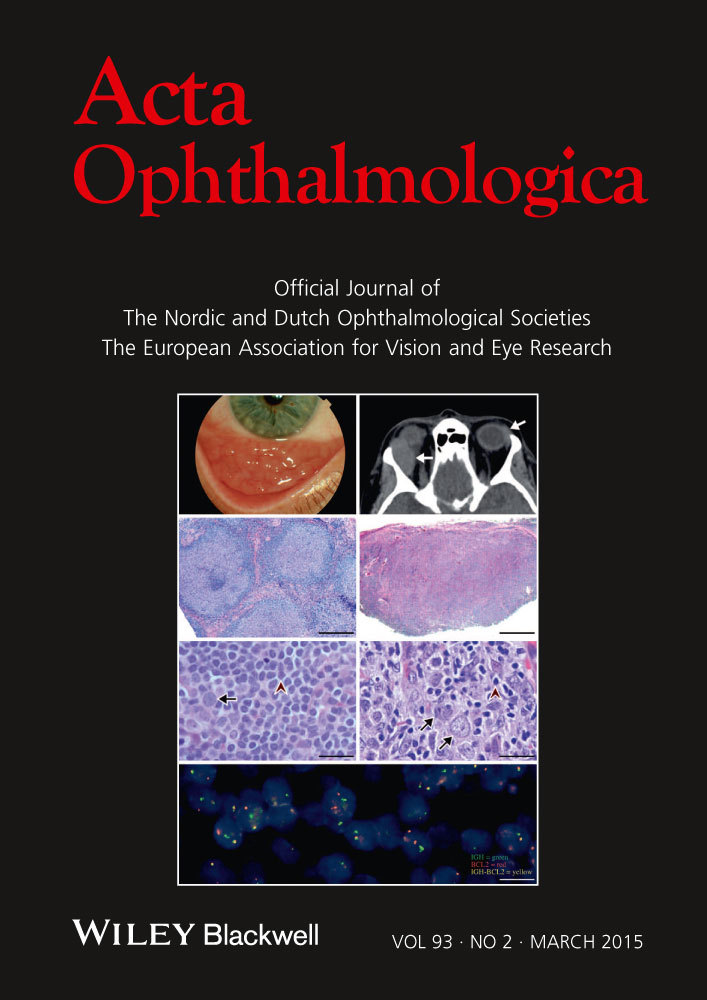Treatment of wet age-related macular degeneration by ranibizumab in “real life” in France: treatment behaviours and associated visual outcome
Wet AMD (wAMD) is the neovascular form of age-related macular degeneration (AMD), the leading cause of loss of vision in industrialized countries (de Jong 2006). In 2007, ranibizumab (Lucentis®, Novartis); a recombinant, humanized Fab fragment of a monoclonal antibody with high affinity for vascular endothelial growth factor was approved by European Medicines Agency with an individualized maintenance regimen of three initial monthly injections (induction) followed by monthly monitoring and retreatment if a visual acuity loss of >5 letters occurred (maintenance). The LUEUR study was designed to evaluate effectiveness of ranibizumab (measured in best corrected visual acuity [BCVA]) in treating wAMD in ‘real-world’ conditions on a large population in France and to assess injection number and monitoring consultations (visits without treatment) frequency. The study duration was 4 years; data presented in this letter pertained to the first 2 years of follow-up.
A total of 592 eyes (total population) of 517 wAMD patients were included with 90 Lucentis® naïve eyes at inclusion (naïve population). Data were collected during routine examinations at inclusion visit and every 6 months for 2 years. The main strengths of this study carried out in ‘real-world’ conditions were the wide number of patients followed up over 4 years as well as the low attrition bias, as only 10% of patients were not examined at the 2-year visit.
The total average injections number per eye was 5.1 and 5.0 in total and naïve populations, respectively. Yearly injections number tended to decrease in both populations (Table 1). This under-treatment probably results from the low number of monitoring consultations that could be explained by the non-interventional design and timing of this study (1 year post-commercialization of ranibizumab) and/or possible difficulties for aged patients to attend monthly visits. During induction or maintenance phases, the main reason for retreating eyes was based on optical coherence tomography results.
| Variable | Total population | Naïve population | |
|---|---|---|---|
| Treatmenta 1 year (induction phase) (Mean [SD]) | 2.9 ± 2.20 (N = 542) | 3.4 ± 1.62 (N = 80) | |
| Treatmenta 2 years (maintenance phase) (Mean [SD]) | 2.2 ± 2.58 (N = 514) | 1.6 ± 2.32 (N = 80) | |
| Monitoringb 1 year (Mean [SD]) | 6.1 ± 3.34 (N = 542) | 5.6 ± 3.34 (N = 90) | |
| Monitoringb 2 years (Mean [SD]) | 4.9 ± 3.54 (N = 514) | 3.8 ± 3.44 (N = 72) | |
| Visual acuityc (Mean [SD]) | Inclusion | 54.9 ± 20.84 (N = 591) | 45.9 ± 19.77 (N = 90) |
| 6 months | 55.3 ± 21.59 (N = 580) | 50.3 ± 21.42 (N = 90) | |
| 12 months | 55.0 ± 21.97 (N = 546) | 48.0 ± 22.30 (N = 79) | |
| 18 months | 54.1 ± 23.03 (N = 529) | 48.2 ± 22.52 (N = 76) | |
| 24 months | 52.9 ± 23.43 (N = 526) | 45.7 ± 23.49 (N = 77) | |
- N, number of eyes for which results were available; SD, standard deviation.
- a In number of intravitreal injections per year.
- b In number of monitoring consultations per year.
- c In Early Treatment Diabetic Retinopathy Study (ETDRS) letters.
Over the first 6 months of treatment, mean BCVA (Table 1) remained steady in total population, while it increased by about 4 Early Treatment Diabetic Retinopathy Study (ETDRS) letters in the naïve populations. At 2 years, a decrease observed in mean BCVA value was statistically significant from baseline (−3.4 ± 18.6 ETDRS letters [95% confidence interval: −4.95; −1.75]) in total population, but not significantly different (−0.6 ± 21.5 ETDRS letters [95% confidence interval: −5.51; 4.26]) in naïve population. However, mean BCVA remained clinically stable (decrease lower than five ETDRS letters) in both populations. Moreover, percentages of patients achieving therapeutic success (lost <15 letters from baseline to year 2) were 75.8% and 76.4% in total and naïve populations, respectively.
These results are supportive of previous published studies, that is, BCVA improvement during the first 6 months and maintaining or improvement throughout 2-year treatment (main gain ranged between 7 and 9 ETDRS letters) (Querques et al. 2010; CATT Research Group 2011, 2012; Lala et al. 2013). However, in these studies, patients received higher and/or increasing number of injections per year (mean injection number ranged between 5.10 and 12.6 at year 1 and between 6.40 and 22.4 at year 2). In addition, strict monitoring and follow-up visits were also imposed unlike LUEUR2. This highlights that BCVA improvement in naïve population during the first 6 months of the LUEUR2 study is probably due to close application of monthly monitoring of the induction phase, which was then subject to lapse in the maintenance phase, with corresponding loss of visual acuity.
In conclusion, despite infrequent follow up of patients and possible consequent under-treatment, ranibizumab enabled stable maintenance of BCVA for 2 years in elderly wAMD patients treated under ‘real-world’ conditions. Furthermore, no new safety problems were identified during LUEUR2 study.




